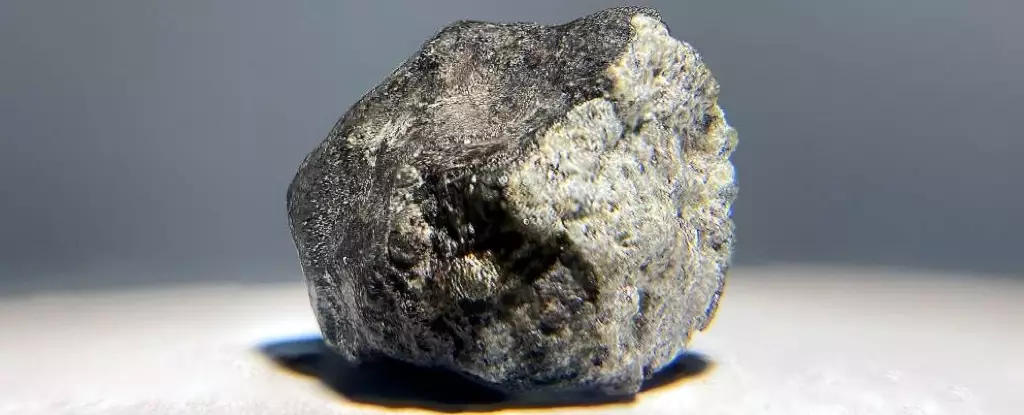Meteorites are not just remnants of ancient celestial bodies; they are vital keys that unlock the mysteries of our Solar System’s history. Until recently, scientists grappled with understanding the origins of most meteorites that penetrate our atmosphere. However, groundbreaking new studies have illuminated the pathways of over 90 percent of these extraterrestrial fragments, revealing their shared ancestry with specific asteroid families in the void between Mars and Jupiter. These discoveries, led by collaborative efforts from esteemed research institutions, promise to reshape our comprehension of cosmic events that shaped the early Solar System.
Meteorites, particularly the common H (high iron) and L (low iron) chondrites, serve as a tangible connection to the building blocks of planetary formation. Composed predominantly of tiny spherical structures known as chondrules, which form from molten rock’s rapid cooling, these meteorites encapsulate not only the chemical composition but also the environmental conditions of their origins. The significant prevalence of these types—making up nearly 70 percent of meteorite finds—speaks volumes about the nature of space debris that has attempted to breach our planetary defenses.
This new research indicates that many of the meteorites currently impacting Earth stem from just three prominent asteroid families: Massalia, Karin, and Koronis. The implications of this are profound; rather than an ocean of sources, we are left with a more defined origin, simplifying the narrative of meteorite falls and paving the way for more specific studies.
The scientific teams involved in this research have not merely cataloged meteorite origins but have also traced back to crucial celestial events that led to their dispersion across the Solar System. Notably, the Massalia asteroid family experienced two significant collision events, one 466 million years ago and another 40 million years ago. Similarly, the Karin and Koronis families witnessed collisions around 5.8 and 7.6 million years ago, respectively. Such findings underscore the violent, chaotic nature of the asteroid belt, where fragmentation from collisions produces numerous smaller bodies that eventually tumble towards Earth.
This intricate dance of destruction and creation—where fragments break free from their parent bodies—highlights the dynamic nature of asteroids, revealing just how interconnected these celestial bodies are. Each collision sends shockwaves through the asteroid belt, generating a cascade of debris and increasing the likelihood of further interactions that can eventually lead to Earth-bound meteorites.
The revelations from these studies extend beyond mere classification; they enhance our overall understanding of solar system evolution. By linking over 90 percent of meteorite types to asteroid families like Veritas, Polana, and Eos, researchers are constructing an elaborate tapestry that illustrates the formative processes of our cosmic neighborhood. These findings not only enrich our understanding of the past but also provide insights into future trajectory forecasts for these meteoritic bodies.
The ongoing commitment of the research teams to continue their observations serves as a testament to the importance of understanding these materials. Each meteorite brings with it a story of chemical processes, potential planetary formation, and significant events that shaped the Solar System. The more we learn about these celestial souvenirs, the clearer the timeline of our cosmic heritage becomes.
The insights garnered from these studies reflect a significant leap forward in the field of planetary sciences. As we aggregate data on meteorite origins and their fascinating journeys, the inquiries into their implications for planetary formation, evolution, and potential hazards also broaden. This burgeoning field holds promise not only for astronomers but also for anyone vested in the future of planetary exploration. The pursuit to account for every type of meteorite serves as a rallying point in our quest to understand the intricate cosmic puzzle of which we are a part, inviting future generations to gaze up at the night sky with renewed curiosity and ambition.


Leave a Reply